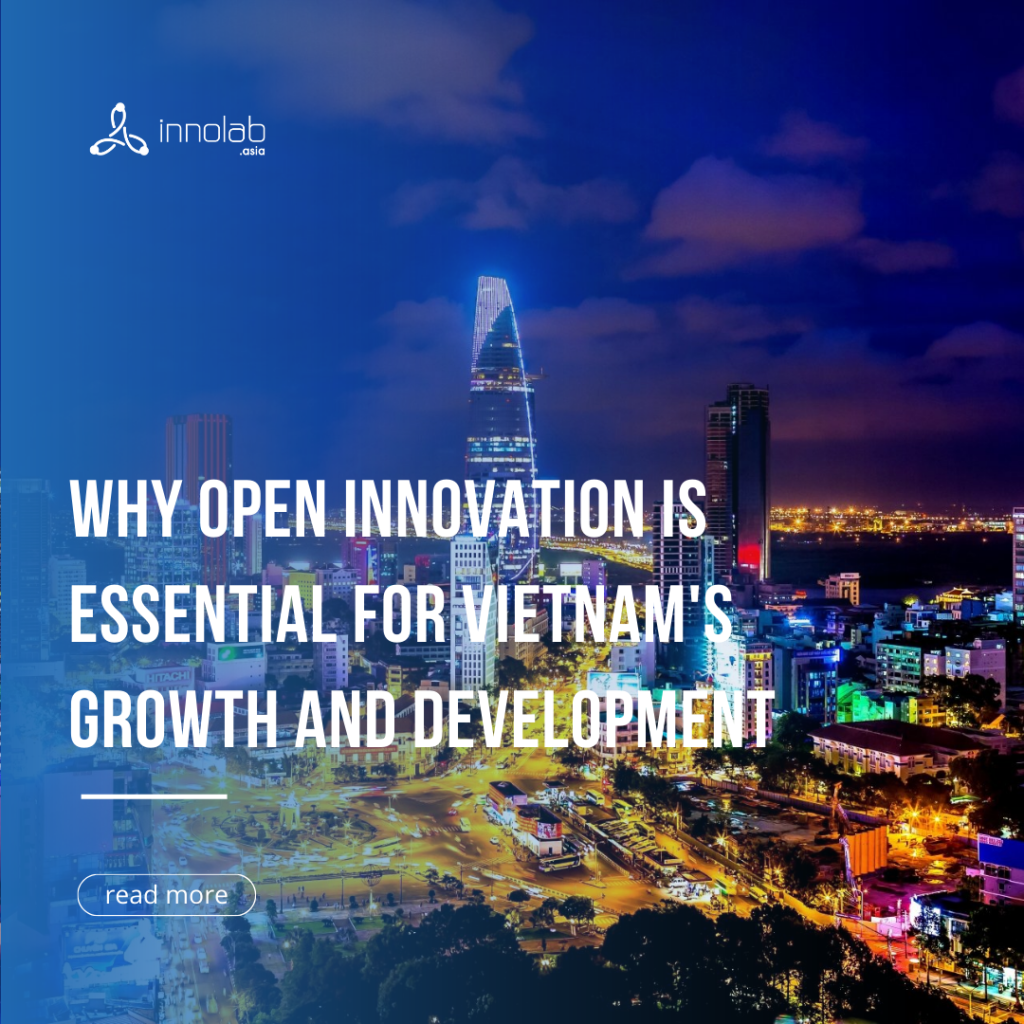Open innovation: what is it, what are its benefits, and what is the world’s view on the matter?
Open innovation: what is it?
Open innovation, originally proposed by Chesbrough in 2003, was defined as “a paradigm that assumes that firms can and should use external ideas as well as internal ideas, and internal and external paths to market, as they look to advance their technology”. Another approach to the open innovation concept is that it is “both a set of practices for profiting from innovation and a cognitive model for creating, interpreting, and researching those practices”. In general, open innovation initiatives can be established from either internal or external sources, and new technologies can enter at various phases. Projects can also be brought to market in a variety of ways, including through out-licensing or a spin-off business.
This concept was brought about as a result of a fundamental shift in how companies generate new ideas and the process of bringing them to market. It was suggested that the conventional approach of internal R&D was no longer the important strategic asset that it once was, and that growing technological development costs and shorter product life cycles made it more difficult for businesses to justify innovation investments. In addition, changes in society and industry have resulted in the increasing mobility of knowledge workers as well as the creation of new financial structures such as venture capital, causing the limits of innovation processes to begin to break down.
Benefits of Open innovation
In general, open strategy is an important approach for those who wish to lead through innovation, and it appears to be particularly important for SMEs that seek fast and sustainable success (which constitute the majority of Vietnam’s business landscape – at approximately 97 percent in 2022, according to the Ministry of Planning and Investment).
This statement stems from the three core benefits of open innovation. Firstly, open innovation creates value for the adopters by creating a sustainable and proactive competitive advantage for the company in the market. Secondly, the nature of the concept is the co-creation of new ventures and new insights; hence, not only does it encourage the creativity and diversity of the products but also nurture the established ones. Lastly, open innovation increases the opportunities for corporations to find the right ideas in the right places thanks to collaborations between various solution seekers and providers.
The world’s view on open innovation
In the current times, startups and technology businesses have replaced major organizations as the core and locomotive for innovation. Open innovation ecosystem participants gather, engage, exchange resources, and participate in co-creation and progress. It can be stated that if firms continue to operate in the conventional manner (self-made, self-deployment, absence of external linkages – Silo mode), the cost of operation and development will be significantly greater, while efficiency will drop. Hence, open innovation has become a trend globally. For large corporations, the hesitation in making innovative moves, and the unwillingness to implement breakthrough innovation ideas (which are often associated with startups) will ultimately lead to problems regarding operational stability and profitability. On the startup side, collaboration with large corporations can help them avoid the death valley and accelerate growth. Thus, opening up innovation activities will be the key to success for firms in many industries to jointly realize their goals and improve the consumer experience in general.
Vietnam’s landscape: why open innovation is needed in Vietnam
Vietnam’s innovation landscape
Vietnam is growing as one of the most dynamic emerging economies in the Asia-Pacific region. According to the yearly surveys of DO Ventures and Cento Ventures, Vietnam has improved from the second least dynamic startup ecosystem among the six major ASEAN countries to the third position, trailing only Indonesia and Singapore. Vietnam had the biggest growth in the Southeast Asian digital economy in 2022, with a 28% rise from $18 billion in 2021 to $23 billion, and it is predicted to expand twice as fast as GDP through 2030 (19% vs. 9%).
In accordance with its rapid economic development, Vietnam has also experienced a development in and has been considered a hotspot for creative start-ups. To be more specific, according to the General Statistics Office, Vietnam can be considered one of the most dynamic creative startup ecosystems in Southeast Asia. The fact that venture capital investment in startups was just 5% in 2018, but ascended to 17% in 2019, demonstrates this great rise. In 2020, the country was home to about 3,000 startups.
Along with the rise of startups, Vietnam is increasingly constructing an ecosystem of support and interaction among economic sectors for them to collectively innovate. Owing to the great effort that the Vietnamese government has spent on facilitating an innovative environment, the country ranked 48 out of 132 countries in the Global Innovation Index (GII) 2022 by the World Intellectual Property Organization (WIPO). In particular, among the lower-middle-income group economies, Vietnam ranked 2nd out of 36 countries, making it the innovation leader in the lower-middle-income. Indeed, statistics showed that the country outperforms the group average in all GII pillars, including creative outputs, human capital and research, market sophistication, business sophistication, knowledge and technology outputs, and infrastructure. Furthermore, Vietnam demonstrates expertise primarily in the areas of market and commercial sophistication, technology, and creative output. For example, according to Volza’s Vietnam in September 2022, the nation was the largest high-tech importer (in terms of percentage of overall commerce) with almost 7,100 high-tech imports.
Why open innovation is needed in Vietnam
Given the potential that Vietnam possesses, such as the advantageous economic conditions, along with other features such as having a young and growing population, these elements present a number of opportunities for businesses, but they also mean a competitive environment. Open innovation is therefore needed in Vietnam for a number of reasons, such as:
- To help Vietnamese companies stay ahead of the competition: The global innovation landscape is constantly changing, and businesses that are not open to new ideas and approaches are at risk of being left behind. Open innovation can help businesses tap into a wider range of ideas and expertise, which can give them a competitive edge.
Samsung can be considered one of the exemplary cases that successfully utilizes the open innovation approach in order to stay at the forefront of the industry. Despite having its own internal R&D unit, the company is also a proud advocate for open innovation and does open innovation collaboration, especially with startups. The four main categories of its innovation policy include partnerships (which aim for new features or integrations within Samsung’s existing products), ventures (which aim to get access to new technologies that Samsung can learn and benefit from), accelerators (of which the resulting products can become a part of Samsung’s product portfolio over time or just serve as learning experiences for the company), and acquisitions (which aim to bring in startups working on innovations that are at the core of Samsung’s strategic areas of the future). In summary, by collaborating with startups, Samsung aims to benefit from the variety of innovations that smaller companies have already come up with. These companies often have products that can complement or be integrated to Samsung’s own products, creating value for both parties, and thus helping Samsung stay competitive in the market.
- To boost economic growth: The collaboration with other organizations and communities means that Vietnamese companies can develop new products and services, improve the diversity of views and expertise, and build valuable business relationships globally, which in turn leads to economic growth on a national scale.
Tesla, Inc. is a typical example of the necessity of open innovation. To be more specific, Tesla’s Open Innovation Policy addresses the need for accelerated innovation among electric vehicle producers. Tesla assured its competitors and the general public in 2014 that it would not file patent litigation against any competitors who shared Tesla’s original technologies as long as the competitors operated in “good faith”. This open innovation adoption of Tesla was made due to the limited competition and sales in the electric vehicle segment at the time. After years of effort, in recent times, Tesla has been one of the biggest contributors to the US economy, particularly to the state of California. For example, wages from Tesla and Tesla-connected jobs resulted in $16.6 billion in economic activity, or $44.4 million injected into California’s economy each day. Another point should be noted that Tesla contributed an average of $1 billion in federal, state, and municipal taxes every year from 2018 through 2021, with around $400 million going toward state and local taxes in 2021..
- To improve the quality of life: Through tackling some of the country’s most serious issues, including poverty, inequality, and environmental degradation, open innovation can help enhance the quality of life in Vietnam.
The United States of America is a pioneer in this field. For example, the United States Environmental Protection Agency (EPA) announced its “Apps for the Environment Challenge” in June 2011, an open invitation for any individual to design applications that would promote environmental awareness and/or protection. This open innovation environmental challenge sought creative people from throughout the country to assist the EPA in developing new solutions, and it resulted in 38 application responses. This example demonstrates that open innovation is a strategic way to address societal and environmental concerns, which eventually helps alter a nation’s quality of life.
To summarize, open innovation may help firms confront obstacles and thrive in the global economy; thus, it is critical to extensively implement this concept, particularly in a developing nation like Vietnam. Nonetheless, despite many of the benefits that open innovation may bring, there are still numerous challenges (such as technological and cultural barriers) that Vietnamese businesses must overcome before completely embracing the open approach.
REFERENCE
- BambuUP. (2021). “Vietnam Open Innovation Report 2021”, NSSC National Startup Support Center. Available online at <https://bambuup.com/pdf/BambuUP_Vietnam_Open_Innovation_Report_2021.pdf> [Accessed July 18, 2023]
- Chesbrough, H.W. (2003a), “The era of open innovation”, MIT Sloan Management Review, Vol. 44, No. 3, pp. 35-41.
- Chesbrough, H.W. (2003b), Open Innovation: The New Imperative for Creating and Profiting from Technology, Harvard Business School Press, Boston, MA.
- Elmquist, M., Fredberg, T., and Ollila, S. (2009). Exploring the field of open innovation. European Journal of Innovation Management, 12(3), pp.326-345.
- Harvard Technology and Operations Management. (2018). Open Innovation at Tesla – Time for a Change?. Available online at <https://d3.harvard.edu/platform-rctom/submission/open-innovation-at-tesla-time-for-a-change/>. [Accessed 24/07/2023].
- Ir.tesla.com. (2018). SEC Filing | Tesla, Inc. [online] Available at: http://ir.tesla.com/node/18501/html [Accessed 24/07/2023].
- NIC, DO Ventures. (2023). Vietnam Innovation & Tech Investment Report 2023. Available online at <https://doventures.vc/assets/uploads/reports/download/vietnam-innovation-and-tech-investment-report-2023-1680151007.pdf>. [Accessed 24/07/2023].
- Tesla.com. (2018). All Our Patent Are Belong To You. [online] Available at: https://www.tesla.com/blog/all-our-patent-are-belong-you [Accessed 24/07/2023].
- Tesla.com. (2023). Tesla’s California Footprint. Available online at <https://www.tesla.com/blog/teslas-california-footprint>. [Accessed 24/07/2023].
- Totty, M. (2017). Will Electric Vehicles Replace Gas-Powered Ones?. [online] WSJ. Available at: <https://www.wsj.com/articles/will-electric-vehicles-replace-gas-powered-ones-1510628461> [Accessed 24/07/2023].
- West, J., Vanhaverbeke, W., and Chesbrough, H.W. (2006), “Open innovation: a research agenda”, in Chesbrough, H.W., Vanhaverbeke, W., and West, J. (Eds), Open Innovation: Researching a New Paradigm, Oxford University Press, Oxford, pp. 285-307.
- WIPO. (2022). Global Innovation Index 2022 – Vietnam. Available online at <https://www.wipo.int/edocs/pubdocs/en/wipo_pub_2000_2022/vn.pdf> [Accessed 24/07/2023]



